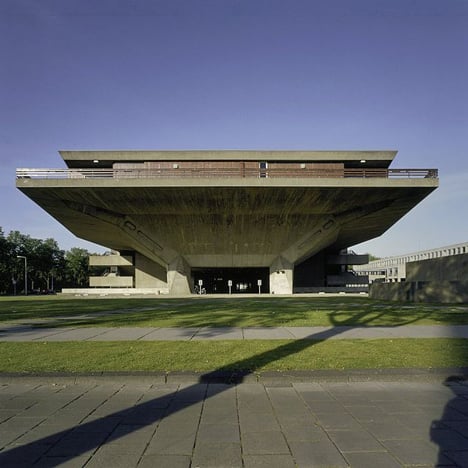
Architects pick their favourite Brutalist buildings
Brutalism: as part of our ongoing series on Brutalism, we asked architects including Kengo Kuma, David Adjaye and Amanda Levete to reveal their favourite buildings from the radical post-war movement.
David Adjaye: Whitney Museum of American Art by Marcel Breuer
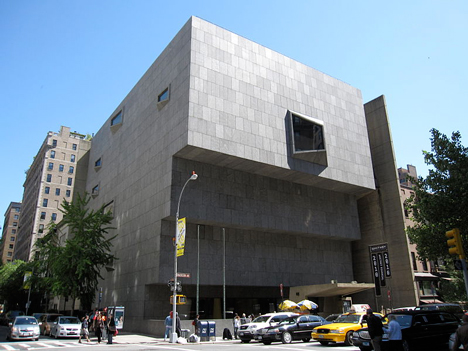
"It's an incredible building that brought a new way of looking at the museum to light and needed a new construction method because of its intriguing idea of a small base with a gallery on top," explained British architect David Adjaye, describing the New York institution completed by Breuer in 1966. "It's an upside-down pyramid. I love it."
Kengo Kuma: Museu de Arte de São Paulo by Lina Bo Bardi
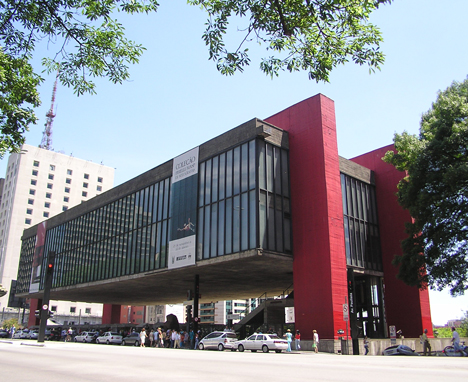
"I like it because it articulates not only the idea of Brutalism but also tries to open itself up to the town," explained Japanese architect Kengo Kuma. "The building well reflects the concept that architecture is not an isolated sculpture, and should be returned into people's hands."
The concrete and glass art museum was designed by celebrated Brazilian architect Bo Bardi in 1968.
Moshe Safdie: Chandigarh and Ahmedabad by Le Corbusier
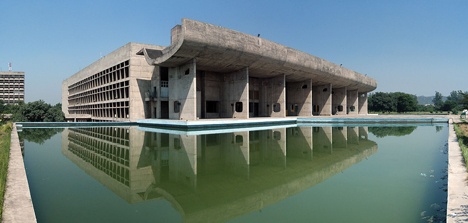
Moshe Safdie, whose Habitat 67 complex in Montreal we featured in our Brutalism series, went for Le Corbusier's designs for the state buildings in two Indian cities.
"My favourite Brutalist buildings are Le Corbusier's buildings in Ahmedabad and Chandigarh, where the volumetric, rich forms best accommodate the roughness and monolithic qualities of the cast-in-place concrete surfaces," said Safdie. "There were many derivatives, some better, some worse; Le Corbusier still remains the master of the medium."
Erick van Egeraat: Aula TU Delft by Van den Broek en Bakema
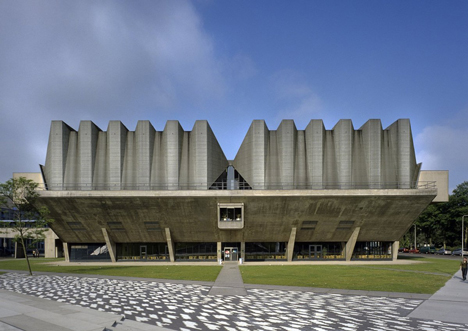
Dutch architect Erick van Egeraat described the university building in the Dutch city of Delft as "rude, brute, space-age like and definitely not groomed."
"It resembles a spaceship and rescue ship from the series The Thunderbirds," he told Dezeen.
Pernilla Ohrstedt: Brunswick Centre by Patrick Hodgkinson

"The Brunswick Centre is a clear favourite for me," said Pernilla Ohrstedt, who lives in the mixed-use complex in central London. "And it is very topical since we are working on a campaign to save its gorgeous portico from being ruined by a terrible new restaurant space currently in planning."
Amanda Levete: Hayward Gallery by Norman Engleback, Ron Herron and Warren Chalk
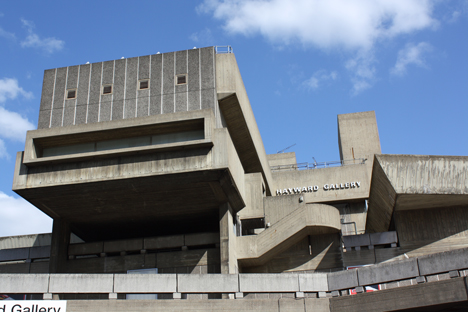
"I love Brutalism," said British architect Amanda Levete, who chose a building in the city where she lives and works.
"I'm very critical of what's happening at the South Bank now, because it's as though it's trying to paint over what it was and take away the integrity of it. For me, the quite Brutal windswept concrete, tough but strong, was a very good form for a place of culture. And now this place of culture is used for food markets and fun fairs; I just find it tawdry and a bit sad that somehow the buildings that were the anchor and spoke for what was inside them have been concealed by this," she told Dezeen.
Nathalie de Vries of MVRDV: Aula TU Delft by Van den Broek en Bakema

Selecting the same building as her compatriot Van Egeraat, MVRDV co-founder Nathalie De Vries chose the 1966 Delft University building, where she studied.
"From my study days I have great memories of the Aula at Delft University of Technology by Van den Broek en Bakema," she said. "The building nicknamed 'The Frog' looks like a concrete spaceship that has landed in the vast space of the modernist university campus and was – at that time – it's only iconic building."
Juergen Mayer H: Fire Station Suarezstrasse Berlin by Bodo Fleischer
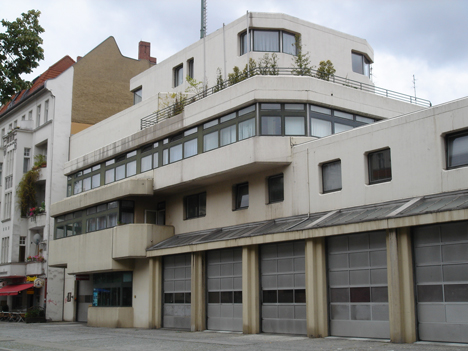
"One of my favourite buildings from the 1970s is a fire station in my neighbourhood," said the German architect, founder of J Mayer H. "It occupies a lot that was destroyed in WWII, however the two buildings from the 19th century on both sides of the site survived destruction."
"Besides having sympathy for 45-degree angles on building corners and windows, I find the overall volume masterfully challenged by the effort to connect with its neighbours," he told Dezeen. "It's a real stretch from history to the then present, from a plasticity of the 1800s to the sculptural quality of exposed concrete from its period. I fear soon it will be covered with Thermoputz."
Tatiana Bilbao: SESC Pompéia by Lina Bo Bardi
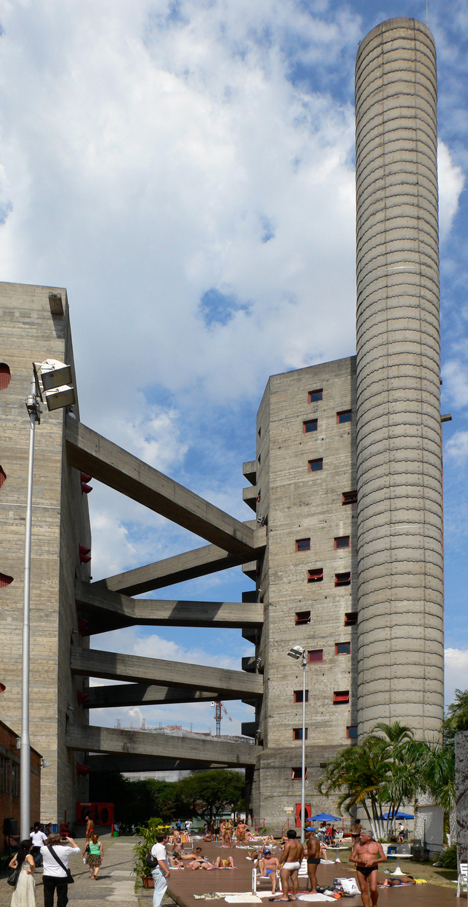
The second of Bo Bardi's designs to make the list is the leisure complex she completed in Brazil in 1977.
"Lina Bo Bardi achieved at the SESC Pompeia, an amazing combination of an intervention in an old factory with a new building, housing respect culture and sports. For me this fantastic combination of a truly human space with a very strong building is a strong statement that is absolutely timeless," said Mexican architect Tatiana Bilbao. "The two towers that emerge from the old factory are in perfect harmony with their context but built in such a beautiful and forceful way."
Asif Khan: Catedral Metropolitana de São Sebastião by Edgar Fonceca
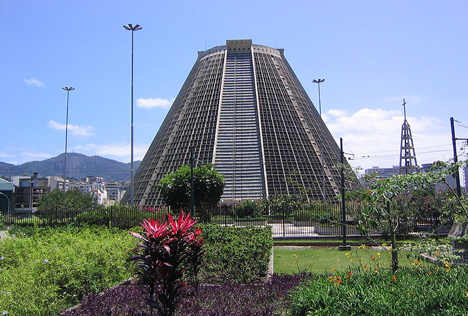
Finally, Asif Khan picked Edgar Fonceca's conical cathedral in Rio de Janeiro. "What's so memorable when approaching it is the initial impression of a holistic entity. It has a soft texture, almost biological, at a scale which is completely unexpected in the city," the London architect told Dezeen.
"The effect of the conical form is universal - you sense at once Mayan temple, Indian mandir, Cambodian wat and at the same time something completely new. Within this mountain is a cavern illuminated by daylight in three ways, and as you arch your neck to follow the soaring stained glass windows upward you discover – of course – an enormous cross of day light where there should be a roof. It's a masterpiece of mediating opposing forces, and that's the allegory. For me a favourite example of the heart within the brut."